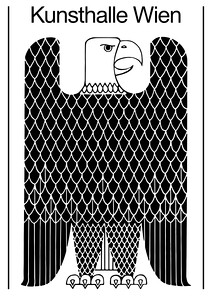The weather is quiet, cool and soft
February 1–April 29, 2018
Treitlstraße 2
1040 Vienna
Austria
The weather is quiet, cool and soft shows works from different phases in the career of the Belgian artist Guy Mees (1935–2003) to shed light on his intuitive and conceptual approach. The selection of works—ranging from early lace pieces, films, photographs, paper cut-outs, to pastel and watercolor works on paper—allow for an overview of Mees’ practice, and his ideas of mutability, fragility, and the expansion of pictorial space.
The title of the exhibition (adapted from a note by the artist) characterizes the atmospheric impermanence in his work, and his relativist poetic approach. As a member of the “New Flemish School,” Guy Mees quickly gained recognition with an international network of artists affiliated with the neo-avant-garde from Europe, Japan, and North and South America, who shared common interests in light, serial structures, movement, and monochromy. However, his non-authoritarian attitude and conceptual approach soon led him to take an alternative path—where the liberation of systems, structures, and media became both idiosyncratic and tangible.
Mees’ practice moved toward an expression of the changing nature of phenomena and the arbitrary nature of the norm. Embarking on formal explorations according to mathematical permutations, grids, and chromatic charts, exemplified by the film and photo series—Portraits (Level differences), and his works on paper—such as the contact sheets composing 1,2,3, or his pastel series from the mid-seventies.
His noteworthy Lost Space works emphasize the notion of a deconstructed frame and the shattering of pictorial space in ordinary space. White panels and structures of the early 1960s, made from industrial lace, mix minimalist forms with sensual if not erotic textures, exposing a diffuse interior space. The more volatile shapes of cut-outs pinned to the wall from the 1980s, whose fragmentary colors sculpt the density and voids of architecture, transform space into an image. Whether pieces from either period, the Lost Space works recall the starting point and culmination of conceptual and poetic reasoning in the work of Guy Mees.
In addition to being the first solo exhibition of Guy Mees in Austria, it will also be the first time that archival materials from his estate are presented—providing further insights into the mind of an artist who, during his entire lifetime, rejected any analytical discussion of his work in favor of its perceptive experience.
Curator: Lilou Vidal
On occasion of the exhibition, a publication featuring newly commissioned essays by François Piron, Lilou Vidal, and an interview conducted by the curator with Wim Meuwissen, Dirk Snauwaert, and Micheline Szwajcer—as well the very first translation of a text by Fernand Spillemaeckers from the 70’s—will also include unknown archival material from Guy Mees’ estate such as early photographs, slides, texts and notes, and other personal documents. The book is edited by Lilou Vidal, and published by Sternberg Press, Berlin.
The exhibition and the publication are a co-production between Kunsthalle Wien and Mu.ZEE, Ostend.
Guy Mees was born in 1935 in Mechelen, Belgium and died in 2003 in Antwerp. He has had international solo and group exhibitions in major institutions and galleries, among others: Zero Avantgarde, Lucio Fontana’s Atelier, Milan (1965); Wide White Space, Antwerp (1967); Galerie X-One, Antwerp (1969–1971); MTL, Brussels (1970–1976); Museum of Modern Art, Oxford (1974); The Sixties: Art in Belgium, Stedelijk Museum voor Actuele Kunst (SMAK), Ghent (1979); Galerie Micheline Szwajcer, Antwerp (since 1982); Palais des Beaux-Arts, Brussels (1990 and 1993); Designated Space II-Space as Scene, Museum Dhondt-Dhaenens, Deurle (1993); M HKA Museum van Hedendaagse Kunst, Antwerp (2002); Museum M, Leuven (2012); Bureau des Réalités, Brussels (2016); Galerie Micheline Szwajcer, Brussels (2016); Galerie David Zwirner, London – New York (2017); gb agency, Paris (2017); Galerie Nagel / Draxler, Berlin/Cologne (2017).


